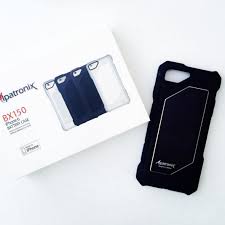In today’s fast-paced world, communication has become an essential part of our daily lives. From sending emails to streaming movies, our dependence on the internet and other communication technologies is ever-increasing. With this surge in demand for high-speed and reliable connectivity, researchers have been exploring new and innovative ways of transmitting data. One such technology that has revolutionized modern-day communication is optical fiber cables.
Optical fiber cables are thin strands made of glass or plastic that are used for transmitting information over long distances at high speeds. These cables work by using light signals instead of electrical signals to transfer data from one point to another. The use of light enables these cables to transmit vast amounts of data quickly and efficiently without experiencing any significant signal loss or interference. In this article, we will explore the power of optical fiber cables in modern communication and how they have transformed the way we communicate today.
6 Ways to Discover the Power of Optical Fiber Cables in Modern Communication
What Are Optical Fiber Cables and How Do They Work?
Optical fiber cable are a type of cable that uses fiber optic technology to transmit signals through the use of light. The cables consist of a thin glass or plastic core, surrounded by a cladding layer and protective coating. The core is designed to carry light signals over long distances without significant loss of signal strength.
The concept behind how optical fiber cables work is relatively simple. Light travels down the length of the cable by constantly reflecting off the inner walls of the core thanks to total internal reflection. This means that as long as the angle at which light enters the core is shallow enough, it will keep bouncing back and forth until it reaches its destination. As a result, data can be transmitted quickly and efficiently over long distances, making optical fiber cables an essential component in modern communication systems.
Advantages of Using Optical Fiber Cables in Communication
The utilization of fiber optic technology provides significant benefits to the transmission and reception of data in various industries. Optical fiber cables are made up of thin strands of glass or plastic that transmit light signals over long distances. The use of this technology in communication has revolutionized the way information is sent and received, particularly due to its reliability and high speed data transmission.
One major advantage of using optical fiber cables is their high bandwidth capacity, which allows for faster data transfer rates than traditional copper wire cables. This means that larger amounts of data can be transmitted over longer distances without any degradation in signal quality. Additionally, fiber optic cables are less susceptible to electromagnetic interference, making them a more secure option for sensitive information transmission such as financial transactions or medical records. Overall, the advantages offered by optical fiber cables make them an essential component for modern communication systems.
Types of Optical Fiber Cables
There are various categories of fiber cables that differ in their construction and application, each with unique features and capabilities. One of the primary differentiators between optical fiber cables is whether they are single mode or multi mode. Single mode fibers have a smaller core diameter than multi-mode fibers, which means that they can only transmit signals along a single path.
This makes them ideal for long-distance communication because they reduce signal attenuation and dispersion. On the other hand, multi-mode fibers have a larger core diameter that allows them to transmit signals along multiple paths simultaneously, making them better suited for short-distance communication.
Another important aspect of optical fiber cables is their connectors and adapters. Fiber optic connectors are used to join two ends of an optical fiber cable together, while adapters are used to connect two different types of connectors. There are various types of connectors available such as SC (Subscriber Connector), ST (Straight Tip), LC (Lucent Connector), and FC (Ferrule Connector).
Different connectors may be required depending on the type of cable being used or the specific application requirements. Adapters typically come in either simple or hybrid versions, with simple adapters designed for connecting identical connector types while hybrid adapters allow different connector types to be joined together. Overall, understanding the different types of fiber optic cables and their associated components is crucial for ensuring optimal performance in modern communication systems.
Installation and Maintenance of Optical Fiber Cables
Installation and maintenance of fiber optic networks require specialized knowledge and skills to ensure the proper functioning of the system. The installation process involves several steps, including site preparation, cable routing, splicing, and termination. Fiber optic splicing is the process of joining two optical fibers together using a fusion splicer or mechanical splice. It is crucial to ensure that the splice is properly aligned and has low losses to maintain signal integrity.
Cable testing is another critical step in the installation process as it helps to ensure that the cables are correctly installed and have no defects or damages that could affect their performance. Testing can be done during installation or after completion using different techniques such as visual inspection, continuity testing, insertion loss measurement, and OTDR (optical time-domain reflectometer) testing.
Regular maintenance of fiber optic networks is also essential in ensuring their longevity and optimal performance. This includes cleaning connectors regularly, inspecting cables for damage or wear, replacing worn-out components promptly, and retesting periodically to verify network integrity.
Future of Optical Fiber Cables in Communication Technology
The continued development and innovation of fiber optic technology is revolutionizing the way information is transmitted, making it faster, more reliable, and more accessible than ever before. Optical fiber cables are becoming increasingly popular as they offer several advantages over traditional copper wires. For instance, they can transmit data over long distances with minimal signal loss, which makes them ideal for use in telecommunications networks.
Looking ahead, potential innovations in optical fiber technology include the development of even faster transmission speeds and increased bandwidth capabilities. However, there are also challenges ahead such as the high cost of installation and maintenance required for these cables. Additionally, there may be concerns around how to address potential security threats that could arise from increased reliance on this technology. Despite these challenges, it is clear that optical fiber cables will continue to play an important role in modern communication technology as demand for faster and more reliable data transmission continues to grow.
Comparison between Optical Fiber Cables and Copper Cables
A comparison between the transmission capabilities of optical fiber and copper cables reveals a stark contrast that highlights the vast potential of fiber optic technology in meeting the growing demand for high-speed data transmission. While copper cables have been widely used for decades due to their cost effectiveness, they have limited capacity when it comes to transmitting data over long distances at high speeds.
Copper cables are susceptible to electromagnetic interference, which can cause signal loss and degradation. This makes them less suitable for applications such as internet connectivity or video streaming where fast and reliable data transfer is crucial.
On the other hand, optical fiber cables offer much higher bandwidth capacity than copper wires, making them ideal for supporting advanced communication technologies like online gaming or video conferencing. They can transmit data over longer distances without signal degradation, enabling faster internet speeds and smoother streaming experiences. Additionally, they are not affected by electromagnetic interference, reducing the need for expensive shielding equipment or maintenance costs associated with copper cables.
Moreover, optical fibers have a minimal environmental impact compared to copper wires since they do not require toxic materials such as lead or PVCs during production and disposal processes. In conclusion, while both optical fiber and copper cables play vital roles in modern communication infrastructure, it’s clear that fiber optic technology has emerged as the future of high-speed data transmission due to its superior performance capabilities and minimal environmental impact.
Frequently Asked Questions
What is the maximum distance that optical fiber cables can transmit data without signal loss?
The maximum distance for data transmission in optical fiber cables without signal loss depends on the signal attenuation rate. Fiber optic amplifiers are used to compensate for signal loss, extending the range up to several thousand kilometers.
How much does it cost to install optical fiber cables compared to copper cables?
Installation costs comparison between optical fiber and copper cables depend on factors such as distance, terrain, and existing infrastructure. However, long term benefits analysis shows that optical fiber’s higher initial cost is offset by lower maintenance costs and increased bandwidth capabilities.
What are the most common causes of damage to optical fiber cables during installation and maintenance?
Fiber cable fragility can result in damage during installation and maintenance. The most common causes include excessive bending, stretching, crushing, and exposure to excessive temperatures or moisture. Preventing fiber cable damage requires careful handling and adherence to industry standards.
Can optical fiber cables be used for both internet and telephone communication?
Optical fiber cables have numerous benefits for telecommunications, including high bandwidth and low signal attenuation. They can be used for both internet and telephone communication, with future applications including increased speeds and greater connectivity.
How do optical fiber cables compare to wireless communication technologies in terms of speed and reliability?
When comparing speed, optical fiber cables are significantly faster than wireless communication technologies due to the ability to transmit data at higher bandwidths. In terms of reliability, optical fibers have lower latency and are less susceptible to interference or signal loss compared to wireless communication.





